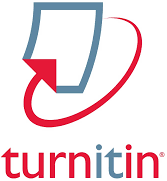Breeding Stage of Nemo Balong Fish (Premnas biaculeatus) on Aquarium Scale at Balai Perikanan Budidaya Laut Lombok
DOI:
https://doi.org/10.29303/jfh.v4i3.5378Kata Kunci:
Clown Fish, Spawning, Larvae, Water QualityAbstrak
Nemo fish cultivation activities at BPBL (Balai Perikanan Budidaya Laut) is located in West Sekotong, West Lombok Regency, West Nusa Tenggara. It is one of the technical implementation units for marine aquaculture in developing marine fish farming activities such as ornamental nemo or clown fish. The purpose of this activity is to determine the spawning of nemo fish carried out on an aquarium scale. Clown fish spawning activity at BPBL Lombok produces up to 1,050 eggs in a period, but the average fertilized is 1,012 eggs, and the hatching numbers are 884 eggs during 6 days of incubation and the time needed to start hatching is 24 hours. Some of the parameters of larval growth from eggs, namely FR / Fertilization Rate, get a result of 96%, HR (Hatching Rate) gets a value of 87%, SR (Survival Rate) with a value of 92%. Water quality such as the ideal temperature in nemo fish cultivation is in the range of 27-32°C, while the ideal pH is 6.7-8.8. Dissolved oxygen is more than 5 mg/L. The salinity and ammonia content obtained are ideal, which showing value 30-34 ppt for salinity and ammonia levels less than 3 mg/L.Unduhan
Diterbitkan
Cara Mengutip
Terbitan
Bagian
Lisensi
1. The copyright of this journal belongs to the Editorial Board, based on the author's consent, while the moral rights of the publication belong to the author(s).
2. The formal legal aspect of journal accessibility refers to the same Creative Common Attribution + Noncommercial + ShareAlike (CC BY-NC-SA), implying that publication can be used for non-commercial purposes in its original form.
3. Every publication (printed/electronic) is open access for educational, research and library purposes. In addition to the objectives stated above, the editorial board is not responsible for copyright infringement















